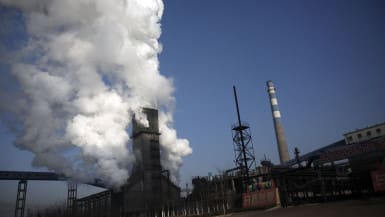
By Tom Miles
GENEVA, May 26 (Reuters) - Carbon dioxide levels throughout the northern hemisphere hit 400
The 400 ppm level in the atmosphere, up 40 percent since wide use of fossil fuels began with the Industrial Revolution, is rapidly spreading southwards. First recorded in 2012 in the Arctic, it has since become the norm for the Arctic spring.
The WMO expects the global annual average carbon dioxide concentration to be above 400 ppm in 2015 or 2016. Rising concentrations of the heat-trapping gas raise risks of more heatwaves, droughts and rising sea levels.
"Time is running out," WMO Secretary-General Michel Jarraud said in a statement.
"This should serve as yet another wake-up call about the constantly rising levels of greenhouse gases which are driving climate change. If we are to preserve our planet for future generations, we need urgent action to curb new emissions of these heat-trapping gases."
Almost 200
Temperatures have already risen about 0.8C (1.4F).
In April, the U.N.'s panel of climate experts said that greenhouse gas concentrations, led by carbon dioxide, would have to be kept below 450 ppm to give a good chance of achieving the 2C goal.
The level of carbon dioxide in the atmosphere is seasonal, since plants absorb more in the summer months, causing a peak in the spring. The northern hemisphere, with more human-related sources of the gas, has a more pronounced seasonal cycle.
Carbon dioxide remains in the atmosphere for hundreds of years. It is emitted by fossil-fueled
During the last 800,000 years, the level of atmospheric carbon dioxide fluctuated between 180 ppm and 280 ppm, and has probably not been above 400 ppm for millions of years, scientists say.
With the widespread burning of coal and oil during the Industrial Revolution, the concentration of carbon dioxide rose to about 290 ppm by the end of the 19th century.
That accelerated last century, with levels between 370 and 380 ppm by the year 2000. An animated graph that shows the history of atmospheric carbon dioxide is online at http://www.esrl.noaa.gov/gmd/ccgg/trends/history.html. (Reporting by Tom Miles, editing by Alister Doyle)
No comments:
Post a Comment